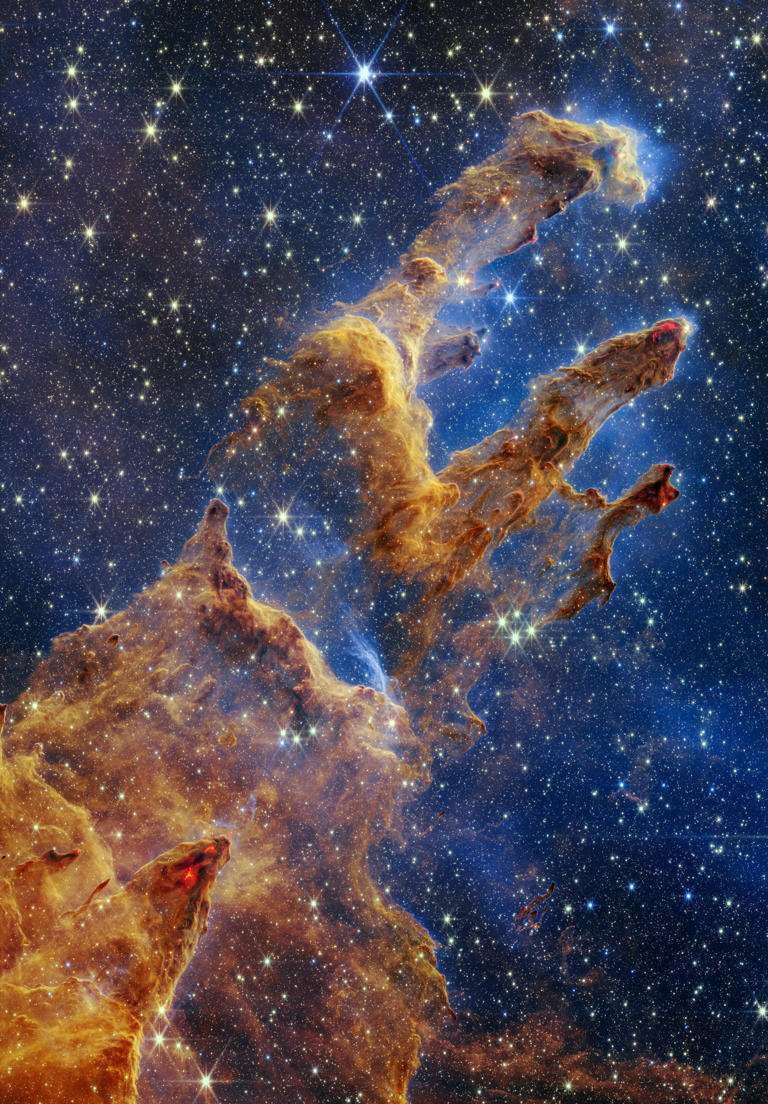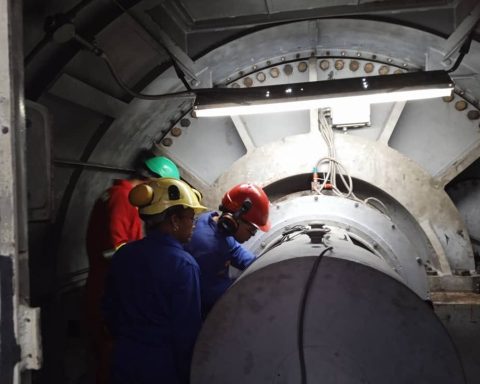NASA’s James Webb Space Telescope captured a new image of the star-forming region known as the Pillars of Creation. The image, showing newborn stars, reveals new details about needles of dust and gas in the region, NASA released Wednesday.
David Grinspoon, an astrobiologist at the Planetary Science Institute, called the new Webb image “simply spectacular, beyond words.”
The Pillars of Creation lie at the center of an area known as the Eagle Nebula, about 6,500 light-years from Earth.
In the new image, the plumes appear less opaque, as Webb’s infrared instruments can penetrate through the dust to reveal newly formed stars.
According to astronomers, the young stars, estimated to be only a few hundred thousand years old, are the bright red orbs in the image. New stars form within clouds of dust and gas as dense clumps of mass collapse under their own gravity and begin to heat up.
Thomas Zurbuchen, associate administrator for NASA’s Science Mission Directorate, tweeted: “See those wavy lines that look like lava on the edges of the pillars? They are baby stars that are forming within gas and dust.”
Observations from the Webb Telescope can help astronomers better understand the process of star formation and refine their models of how newborn stars emerge from clouds of interstellar gas, NASA said.
The tennis-court-sized observatory is equipped with instruments that detect distant stars and galaxies in infrared and near-infrared light. This allows Webb to probe beyond the range of human sight and capture details invisible to other telescopes, including Hubble, which primarily detect visible light.

















